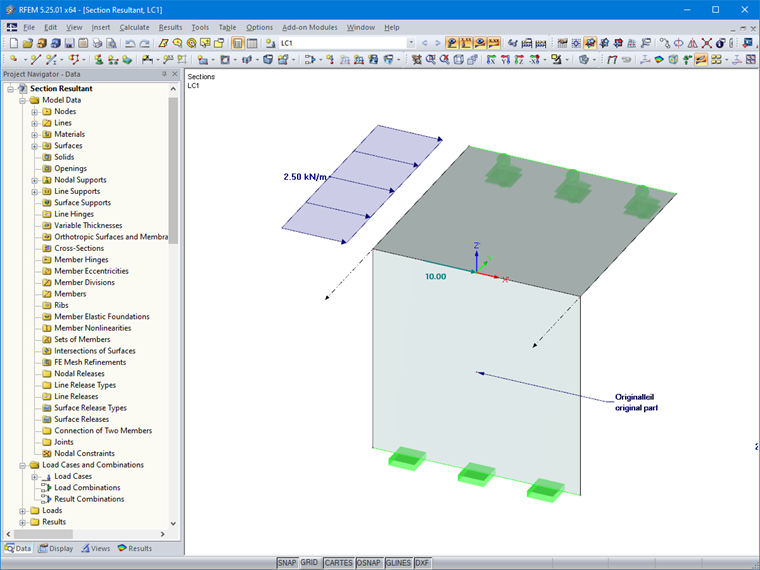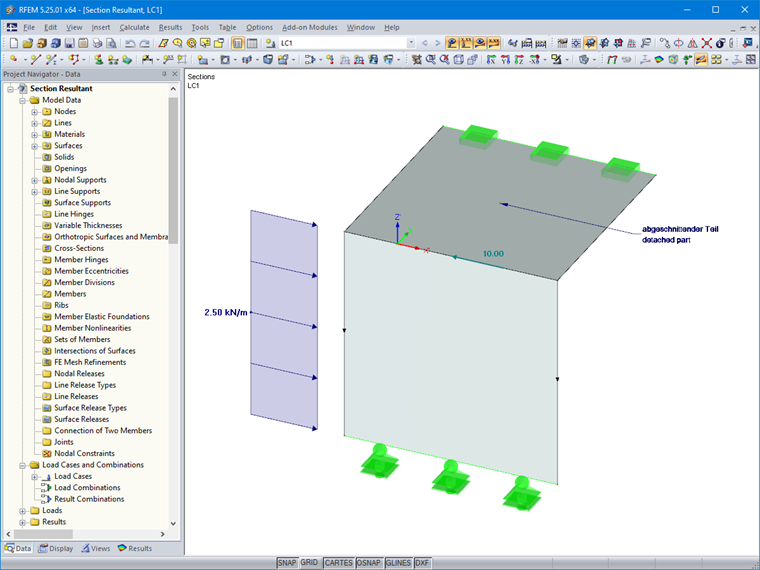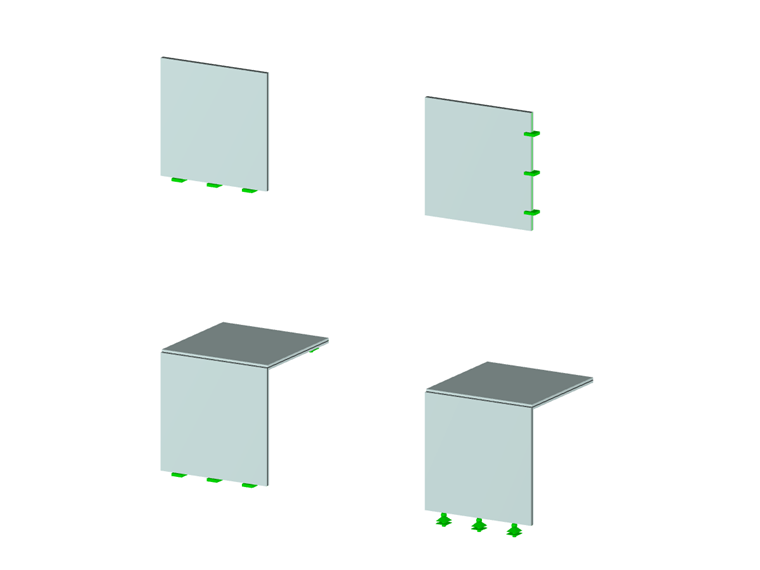As one or more surfaces are cut by the section, two parts will always result from cutting. One part is referred to as the "original part" to which the resultant takes effect, and the other part is referred to as the "detached part". Now, it is necessary to clarify which is the "original" and which is the "detached part". For this, you can imagine a "Section Coordinate System" (SCS) in the section or release, which is aligned analogously to the global coordinate system. Please note that the global Z-axis of the SCS is always oriented upwards, even if the structure's global Z-axis is oriented downwards. Then, the following applies: The "original part" is the one that lies in the negative direction of the respective SCS axis. Check all three axes one by one, starting with X', then Y' and finally Z'. If the section is parallel to the global X-axis, then X' allows no determination and you need to check Y', and so on.
Example 1: Horizontal Section Through Wall
X' does not allow any determination as the section is parallel to the X‑axis.
Y' does not allow any determination as the surface is in the XZ plane.
Z' is governing here; the lower part lies in the negative Z' direction.
Upper part = detached part.
Lower part = original part.
Force always acts on the original part.
Example 2: Vertical Section Through Wall
X' is governing here; the left part lies in the negative X' direction.
Right part = detached part.
Left part = original part.
Force always acts on the original part.
It is not necessary to check Y' and Z'.
Example 3 Horizontal Section Through Wall
X' does not allow any determination, as the section is parallel to the X‑axis.
Y' does not allow any determination, as the surface is in the XZ plane.
Z' is governing here; the lower part lies in the negative Z' direction.
Upper part = detached part.
Lower part = original part.
The detached part is only notional here because the section runs at a boundary line of the surface.
Force always acts on the original part.
Example 4 Vertical Section Through Ceiling
X' does not allow any determination, as the section is parallel to the X‑axis.
Y' is governing here; the left part lies in the negative Y' direction.
Right part = detached part.
Left part = original part.
The original part is only notional here because the section runs at a boundary line of the surface. Therefore, the resultant runs against the X'‑axis or takes effect on the other "cut face".
Force always acts on the original part.
It is not necessary to check Z'.





